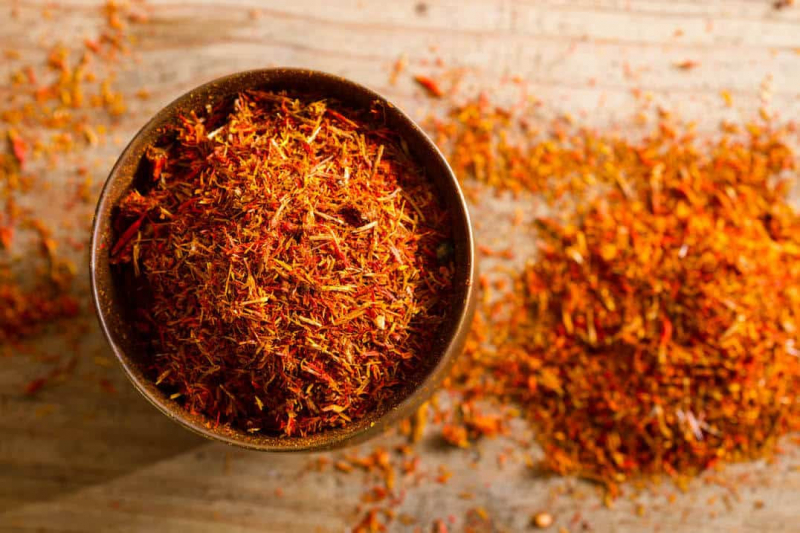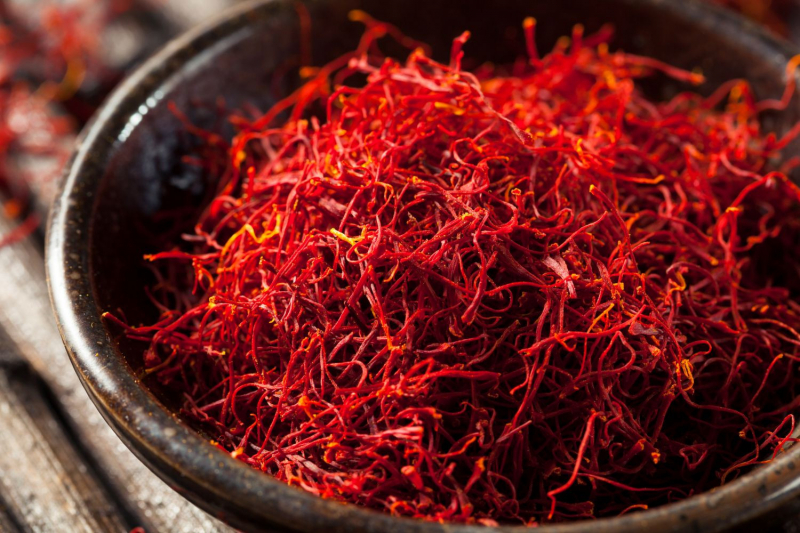Saffron

Saffron has an enigmatic flavor that is difficult to describe. Some claim its sweetness, floral aroma, and earthiness, while others claim bitterness, metallic tang, and musky overtones. Saffron's flavor is determined by its quality, quantity, and thorough preparation. Furthermore, saffron has a brilliant golden hue that can provide a striking tinge to culinary creations. Not to mention that saffron has an exquisite aroma that fills the kitchen with a welcoming and comforting fragrance.
Saffron has been used in the realms of India for millennia, with roots dating back to the ancient Vedic writings and the epic Mahabharata. It has traveled the Silk Road and been carried into India by Persian and Arab conquerors.
Saffron is used in a variety of Indian regional cuisines, including Kashmiri, Awadhi, Mughlai, and Hyderabadi, as well as Gujarati. It is widely used in rice-based dishes such as biryanis and pulao, giving them a festive appearance and flavor. It also appears in a variety of desserts, including kheer, halwa, rasmalai, and kulfi, adding a sense of grandeur and elegance. Furthermore, saffron is frequently used to enhance the flavor and opulence of savory foods such as curries, kormas, kebabs, and paneer preparations.











